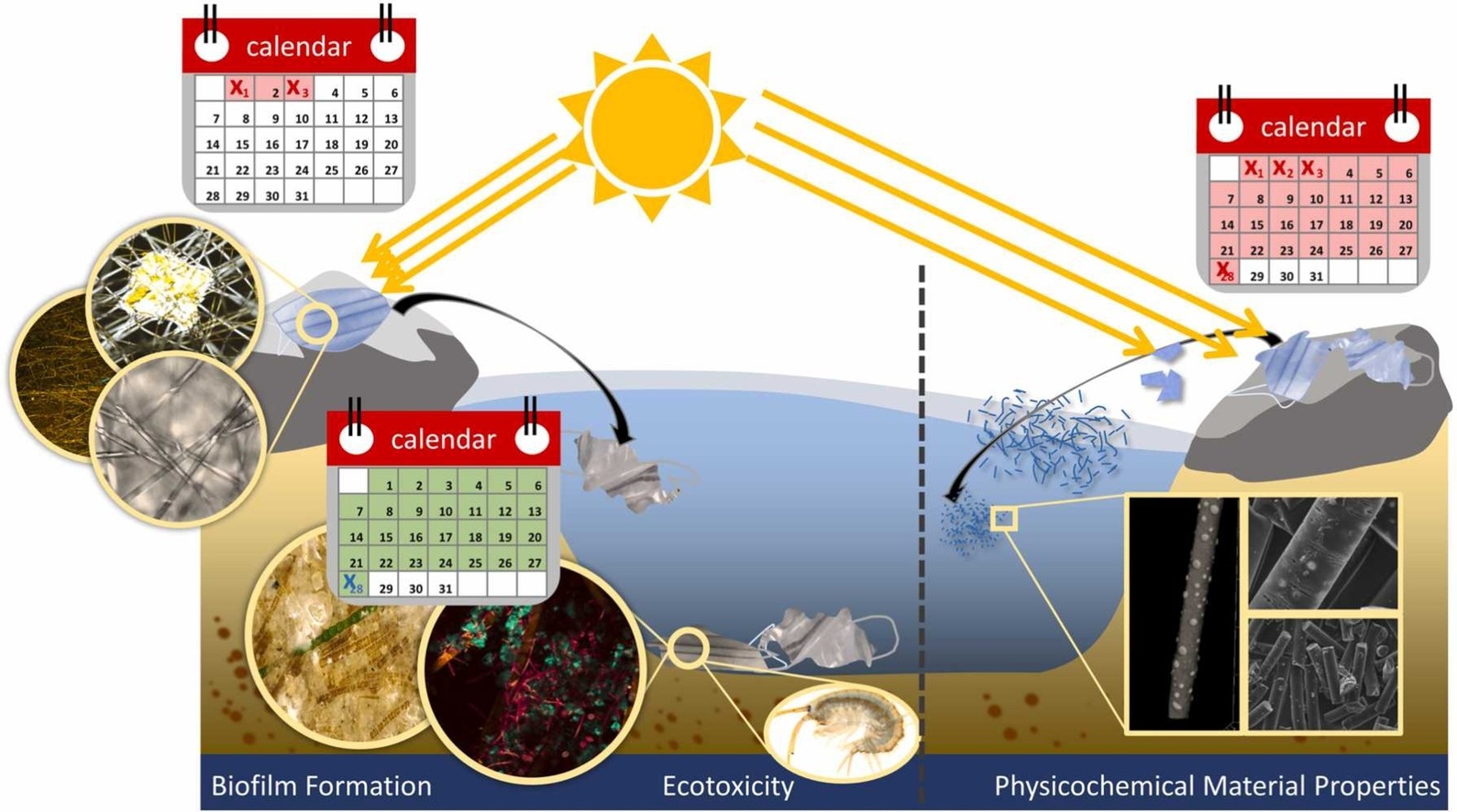[Article] Photodegradation of disposable polypropylene face masks
Résumé
COVID-19 outbreak led to a massive dissemination of protective polypropylene (PP) face masks in the environment, posing a new environmental risk amplified by mask photodegradation and fragmentation. Masks are made up of a several kilometres long-network of fibres with diameter from a few microns to around 20 μm. After photodegradation, these fibres disintegrate, producing water dispersible debris. Electrokinetics and particle stability observations support that photodegradation increases/decreases the charge/hydrophobicity of released colloidal fragments. This change in hydrophobicity is related to the production of UV-induced carbonyl and hydroxyl reactive groups detectable after a few days of exposure. Helical content, surface roughness and specific surface area of mask fibres are not significantly impacted by photodegradation. Fragmentation of fibres makes apparent, at the newly formed surfaces, otherwise-buried additives like TiO2 nanoparticles and various organic components. Mortality of gammarids is found to increase significantly over time when fed with 3 days-UV aged masks that carry biofilms grown in river, which is due to a decreased abundance of microphytes therein. In contrast, bacteria abundance and microbial community composition remain unchanged regardless of mask degradation. Overall, this work reports physicochemical properties of pristine and photodegraded masks, and ecosystemic functions and ecotoxicity of freshwater biofilms they can carry.
Auteurs
Pascal Boulet, Isabelle Bihannic, Renaud Gley, Lucas Gallo, Apolline Badura, Angelina Razafitianamaharavo, Maximilien Beuret, David Billet, Clément Bojic, Céline Caillet, Philippine Morlot, Marie Zaffino, Fatina Jouni, Béatrice George, Camille Noûs, Michael Danger, Vincent Felten, Christophe Pagnout, Jérôme F.L. Duval
Références
Journal of Hazardous Materials, Volume 465, 5 March 2024, 133067
DOI


